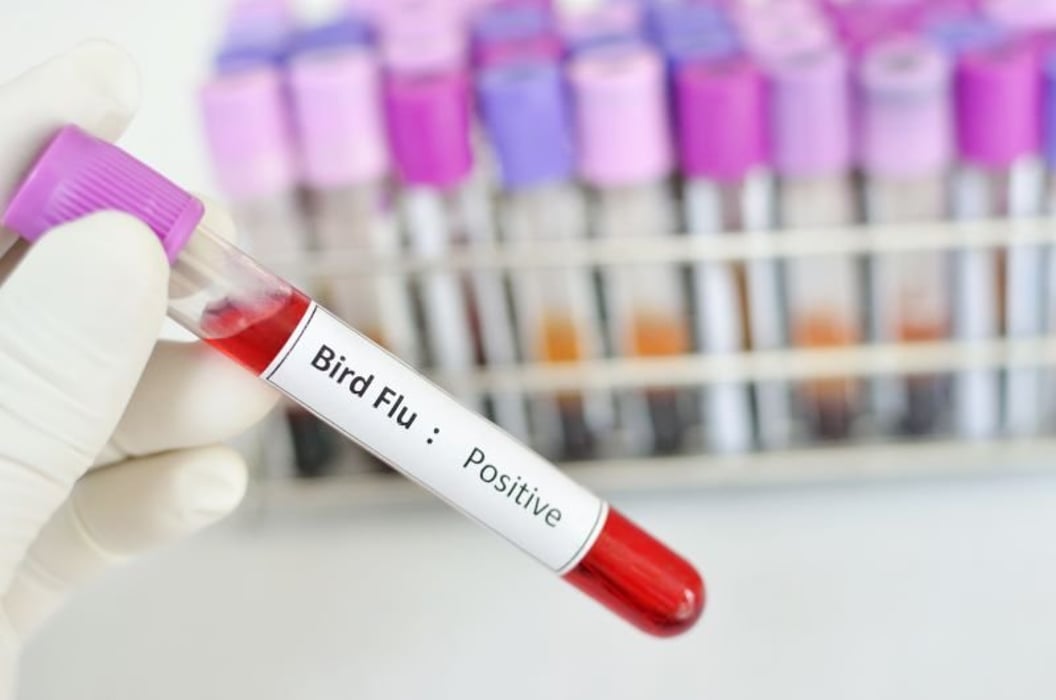Gene Changes Made This Season’s Bird Flu More Severe

FRIDAY, June 2, 2023 (HealthDay News) -- Genetic mutations caused this latest bird flu season to become more severe, increasing the risk it poses to humans and other mammals, a new study finds.
The H5N1 avian influenza virus gained the ability to severely infect the brains of mammalian test subjects like ferrets, researchers with St. Jude Children’s Research Hospital found.
That’s a notable departure from previous strains of the virus, the researchers said.
“We haven’t seen a virus quite like this one,” said lead researcher Richard Webby, with the St. Jude department of infectious diseases, in Memphis, Tenn. “In 24 years of tracing this particular H5N1 flu lineage, we haven’t seen this ability to cause disease but also be maintained in these wild bird populations.”
The H5N1 bird flu is widespread among wild birds in the United States, but is causing only sporadic outbreaks among poultry flocks and mammals, according to the U.S. Centers for Disease Control and Prevention.
One human case has been reported, in someone who had direct exposure to infected poultry, the CDC said. There's been no report of human-to-human transmission of the bird flu in the United States.
For this study, researchers genetically traced the virus’ expansion across the continent and its establishment in wild waterfowl populations.
When the scientists infected ferrets with the newer bird flu strains, they found the virus caused unexpectedly high levels of disease.
“Some of these are really nasty viruses,” Webby said. “There’s a huge amount of the virus in the brain of infected animals. That’s the hallmark of what we saw with these flu strains — increased pathogenicity associated with high virus load in the brain. That’s not the first time we’ve seen H5 viruses in the brain, but these are probably some of the most virulent we’ve looked at over 24 years of following these viruses.”
The latest strain was first detected at high levels in sick chickens but has since expanded into other species, the researchers said. That’s very different from previous North American avian flu outbreaks, which ended quickly when the virus burned out in its main host bird population.
“This is not just a chicken virus now,” Webby said. “It’s also infecting other avian and mammal species in the U.S. It’s a higher exposure risk for humans and other mammals than we’ve ever had in North America. We’ve never really been exposed to this level of circulation of these highly pathogenic flu viruses.”
Still, the researchers maintain that the newer strains of H5N1 influenza remain a low risk to humans, even though it has a greater ability to cause disease in mammals than earlier viruses did. That’s because the virus’ latest form makes it much easier to spread between birds rather than between mammals.
“Overall, their risk to humans is still low,” Webby said in a hospital news release. “But that risk does seem to be changing, and these viruses are doing things that we haven’t seen H5s do before. They’ve come into the continent’s wild bird population, they’ve reassorted, and they’ve been maintained over time. There are now many different types out there, and they're very nasty.”
Researchers say humans should be cautious interacting with wildlife.
“Someone would have to work pretty hard to infect themselves with this virus. But if they do happen to be infected, there’s a real chance of getting a severe disease from it,” Webby noted. “People just need to be careful and remember that some of the wild animals out there potentially harbor these highly pathogenic viruses.”
The new strains’ improved ability to cause severe disease and spread widely through wild bird populations prompted the researchers to track the virus’ spread through North America.
They found a direct ancestor to the latest strains that spread from Europe to the Americas after it gained a different version of the viral protein, neuraminidase, their report said.
The new protein increased the ability of the virus to transmit between birds, just as it arrived on the East Coast of Canada and spread into the United States.
After reaching North America, the virus again rapidly changed to become more virulent, mixing with the flu viruses in wild birds and swapping several genes, the investigators found.
This reassortment of genes had two effects.
First, the virus seemed to become even more adapted to North American bird populations, infecting many different types of birds. It even infected birds like buzzards and eagles that don’t typically get the flu.
Second, the virus became capable of causing even more severe illness.
The findings were published online May 29 in the journal Nature Communications.
“The surprising thing was that just a few reassortment events did change these viruses’ ability to cause disease in our models,” Webby said. “And those events generated many different genotypes from that mixing. Then those viruses spread and have now become established in the North American wild bird population.”
More information
The U.S. Centers for Disease Control and Prevention has more about the avian flu.
SOURCE: St. Jude Children’s Research Hospital, news release, May 29, 2023
Related Posts
Tener diabetes durante años podría acelerar el inicio de la menopausia
MIÉRCOLES, 12 de octubre de 2022 (HealthDay News) -- Mientras antes recibe una...
Cerebral Oximetry Monitoring Not Beneficial in Extreme Preemies
FRIDAY, April 21, 2023 (HealthDay News) -- Treatment guided by cerebral oximetry...
Audible Smoke Alarm More Effective With Increasing Child Age
MONDAY, April 25, 2022 (HealthDay News) -- Child age has a significant impact on...
Could Binge Drinking Set Your Heart Rhythm Off-Kilter?
THURSDAY, Jan. 13, 2022 (HealthDay News) -- Binge drinking on Super Bowl Sunday...
